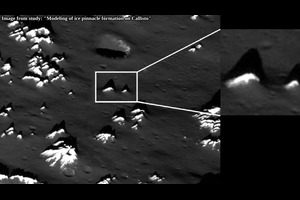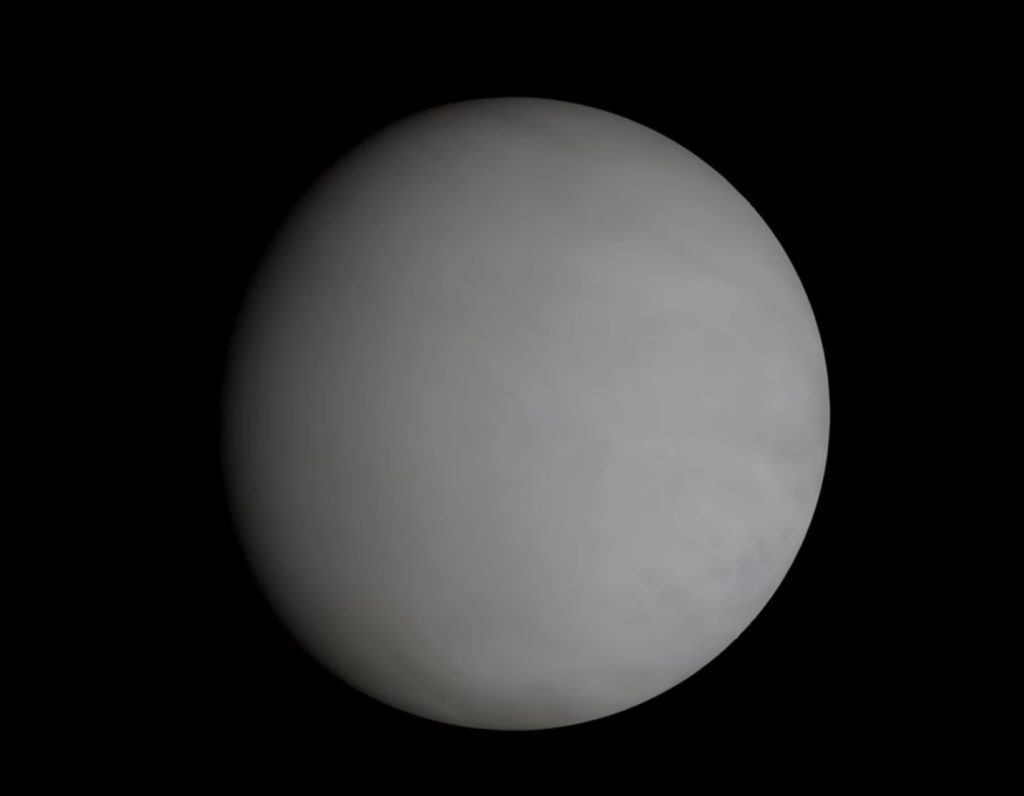
When looking at Venus from space in visible wavelengths, all that can be seen is a relatively uniform and seemingly featureless atmosphere. Above image was captured by NASA’s Messenger spacecraft in 2008.
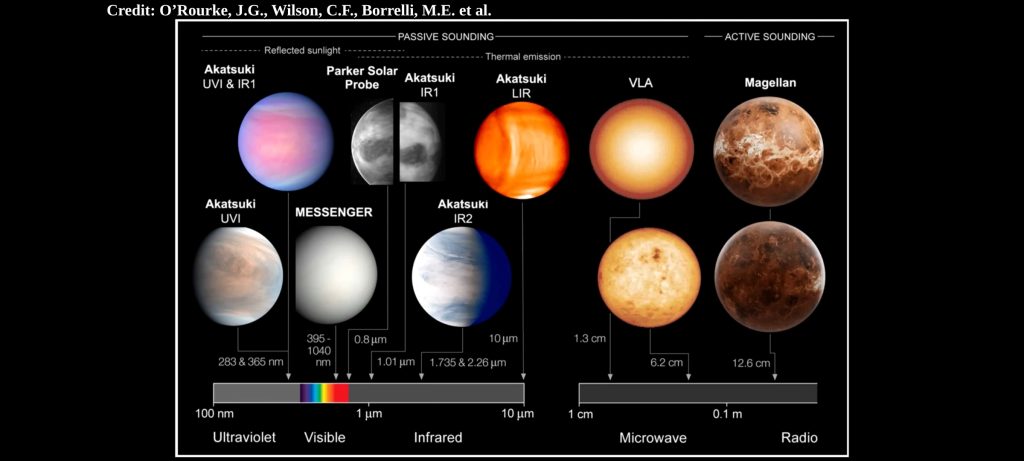
This image shows what was revealed from Venus when it was imaged using different wavelengths. As we can clearly see, wavelengths around the visible spectrum also do not reveal the surface underneath. They cannot penetrate through the thick atmosphere, but they do reveal interesting patterns present in the clouds. However, when we take a look at what was imaged on Venus under really long wavelengths such as radio, then in that case those are long enough such that they penetrate the incredibly thick atmosphere and reveal the details of the surface.
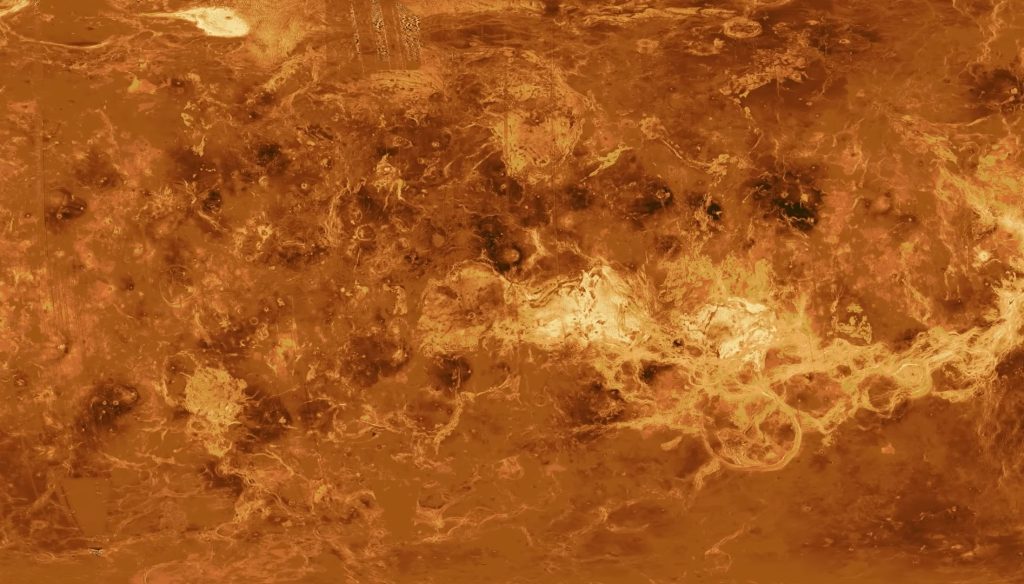
Above image is a map of Venus gathered using radar wavelengths. The actual images are in black and white, so the color of the surface was not captured. However, radar still does allow for a difference in reflectivity to be detected. So it really did somewhat accurately capture where the lighter and darker areas are located because typically the surfaces and materials that efficiently reflect visible wavelengths also efficiently reflect greater wavelengths as well. Now, the lighter areas are where the pseudocontinents of Venus are typically located. Another name for these regions is these pseudocontinents are also a pretty obscure feature of Venus despite being a very significant one.
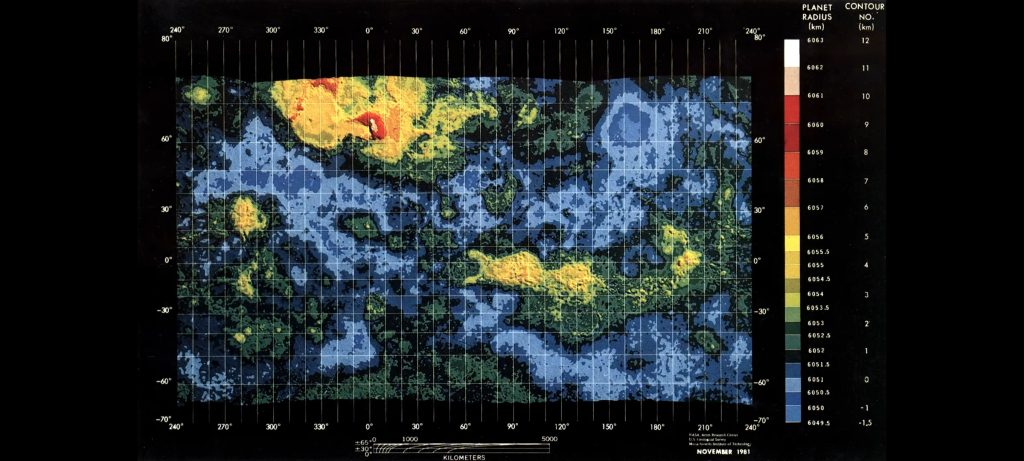
This is a topographic map created using the radar altimery data from the Pioneer Venus orbiter. It reached Venus in 1978 and by 1981 enough data was gathered to create the first topographic map of Venus. The topographic map revealed that the surface of Venus is a lot more flat compared to the one on Earth. So on Earth, 0 m of elevation is simply determined by the sea level. But Venus doesn’t have a sea, at least not in a way the Earth does. Because of that, the 0 m reference point on Venus is determined by the median diameter or median radius.
It was found that 50% of Venus’s surface is within only 500 m of the median radius. And according to the later data from NASA’s Magellan probe, 80% of Venus’s surface is within 1 kilometer of the mean radius. As already mentioned, tesser are mostly where the pseudocontinents of Venus are located at. So they are regions of a complex and chaotic terrain that stand tall compared to the surrounding surface, which is mostly a relatively smooth plane. That’s why these regions are in a sense continents. But also, calling them pseudocontinents does seem appropriate considering that they don’t appear to be on tectonic plates like the continents of Earth are. So overall, it looks like Venus does not have tectonic plates.
So first of all, let’s take a look at what percentage of the surface these pseudocontinents of Venus take up. Highlands on Venus are defined as places that have an elevation of about 2 km. Only about 10% of the surface of Venus has an elevation of 2 km and greater. However, despite only being 10%, this still means that the highlands of Venus, that is pseudo continents, take up 46 million km square, just a bit larger than the surface area of Asia.
Now, these highlands are not all located in one place. The topographic map clearly shows them as being spread out. The two most prominent somewhat contiguous pseudocontinents of Venus are Ishtar Terra and Aphrodite Terra. Now on this map it appears as though Aphrodite is a bit smaller than Ishtar. But this is just a rectangular map and these rectangular maps just do not show size accurately as there is less land at higher latitudes. The smaller amount of land that is present there appears as larger than the land at lower latitudes.
This problem is also present on flat rectangular maps of Earth. That’s why Greenland appears to be about as large as Africa on a flat rectangular map, while in reality Africa has a surface area 15 times greater. Aphrodite is nearly double the size of Ishtar. It has a surface area similar to that of Antarctica, so about 15 million km square. Ishtar has a surface area of about 8 million km square, so similar to that of Australia.
Despite Ishtar being significantly smaller than Aphrodite, it is quite a bit more elevated at least in many regions. Now, both have an elevation that is typically from 3 to 5 km. The most elevated regions of Aphrodite are typically about 6 km. There are quite a few of those. The tallest point of Aphrodite, however, is at the shield volcano Matt. that is 8 km above the mean radius.
While Aphrodite has Matt, it has a mountain range, Maxwell, and on it there is a mountain with a peak called Scotty that has an elevation of 10.7 km, the tallest mountain on Venus. At that elevation of 10.7 km, the temperature is about 380° C and the atmospheric pressure is about 45 bars, so 45 times greater than at the sea level of Earth. Now, those numbers are still obviously pretty extreme for us. But as already said, the majority of Venus’s surface is a plane close to the 0 m of elevation. Because of that, throughout most of the surface, the temperature is about 460° C and the atmospheric pressure is 92 bars.
At such pressure and temperature, the carbon dioxide in the atmosphere stops acting like a gas and is instead in a supercritical fluid state. So it starts to resemble a liquid. In a sense, the surface of Venus is covered in a carbon dioxide ocean.
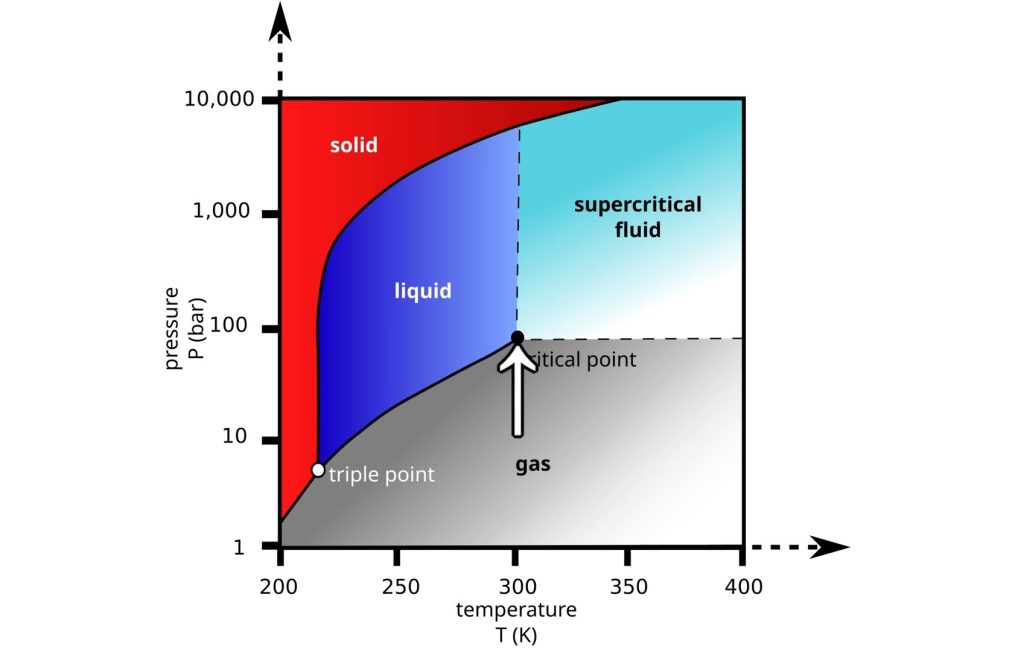
However, according to phase diagram above, carbon dioxide starts being in a supercritical fluid state at around 73 bars and at a temperature of 30° C. Now, because the atmospheric pressure at Scotty Monz is 45 bars, that does mean that carbon dioxide there is not in a supercritical fluid state. So this mountain stands above the fluid carbon dioxide ocean.
But not only that. Because vast parts of Aphrodite and Ishtar are at or above 5 km, the pressure at those places is about 66 bars. So close but still below the threshold for a supercritical fluid state. So the pseudocontinents of Venus in a way share a similarity to the continents present on Earth. The conventionally thought of continents on Earth are dry land surrounded by liquid water. In a similar way, large parts of Venus’s pseudocontinents also stand tall above a fluid carbon dioxide ocean. However, on Earth, the difference between dry land and liquid is clear, while on Venus, the difference between the fluid and the gas parts is much less obvious.
It is also worth mentioning that these pseudocontinents are also the coldest places on Venus. On Earth, temperatures significantly depend on how much sunlight is present. That’s why the differences between the poles and the equator are so great in terms of the average temperature. And the difference in sunlight amount is also why on Earth on the night side the temperatures are significantly colder compared to the day side.
On Venus, however, things work very differently. Its extremely thick atmosphere of supercritical carbon dioxide fluid makes it such that heat is transferred extremely efficiently throughout the latitudes and throughout the dayside and night side. And that is especially impressive considering the daytime and nighttime on one place in Venus near the equator lasts for months.
As already explained, the regions with these bright patches, these are also where the pseudocontinents mostly are. And one of the potential reasons as to why the surface there is relatively bright is because the different atmospheric conditions potentially changed the types of minerals present. Now, it is worth noting that the difference in reflectivity is rather sudden for Ishtar. Right where the enormous Maxwell mountain range is present there, we can see a sharp contrast between the mountain and the surrounding plateau. But the exact composition of that bright material is unknown.
There are ideas that it is essentially metallic snow. So there could be certain metallic compounds that sublimate from the lower warmer regions and get deposited into higher cooler regions. Unlike on Ishtar, on Aphrodite, the bright material appears a bit more gradually. The bright material also appears at lower latitudes compared to the Ishtar region. Possibly that is because large parts of Ishtar are rather smooth, and the smooth regions of Venus are typically darker while the contorted regions are typically brighter. That’s why the contorted Maxwell is bright while the surrounding region that is more smooth is dark.
Most of Aphrodite, however, is very contorted. So it makes sense that it also has the brighter material present at lower latitudes. So it looks like a combination of both altitude and uneven terrain both play a role in whether or not a region on Venus is bright. But as to what exact material causes the brightness, that still is an unsolved question.
Also, the areas that are bright and dark are not neatly separated in all cases. At the slopes of the Aphrodite continent, this image was captured. We can see countless bright ridges, but between them patches of dark material can be seen. These are potentially a result of lava being propped up in that region or possibly these got there as a result of wind spreading the grain-sized dark material from the dark plains.

And yes, there is evidence of significant wind activity that transports materials. In the image above of western Aphrodite, we can see clear signs of wind streaks next to these bright patches.
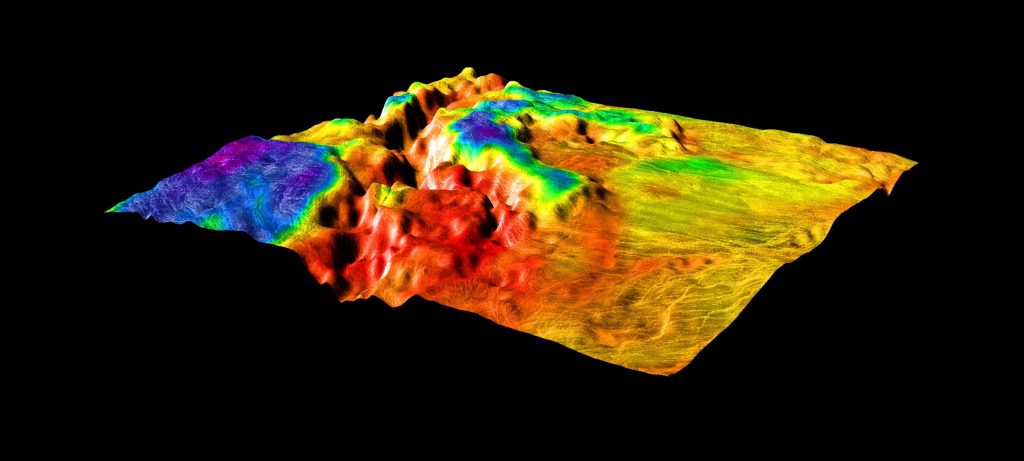
Above we can see a 3D view of the border between the pseudocontinent and the low-lying plane. As clearly visible, the border is extremely chaotic. It isn’t known how these features formed. Not only that, it also isn’t known as to what the general mechanism is that led to the formation of the continental plateaus.
There are, however, certainly some ideas. One of them is that the continents formed as a result of the downwelling of the mantle in certain regions, which then led to the thickening of the crust. However, one objection to this is that it doesn’t produce the shape of the continents that we are seeing today. Another idea is that the continents formed as a result of a piece of crust being surrounded by the mantle, which then, due to high temperatures of that mantle, led to the compression of the crust which lifted the crust upwards and also led to the formation of the countless valleys and ridges present in the pseudocontinents. But this idea isn’t confirmed.
In order to better understand how the continents of Venus formed, sending landers is probably a necessity. But that is a massive challenge considering the extreme conditions of the surface. That’s why the longest lasting lander on Venus is Venera 13 at 127 minutes. Meanwhile, currently the longest lasting rover on Mars was Opportunity at about 15 years. It is going to be extremely challenging to improve the survival time of landers on Venus simply because of the extreme conditions present.
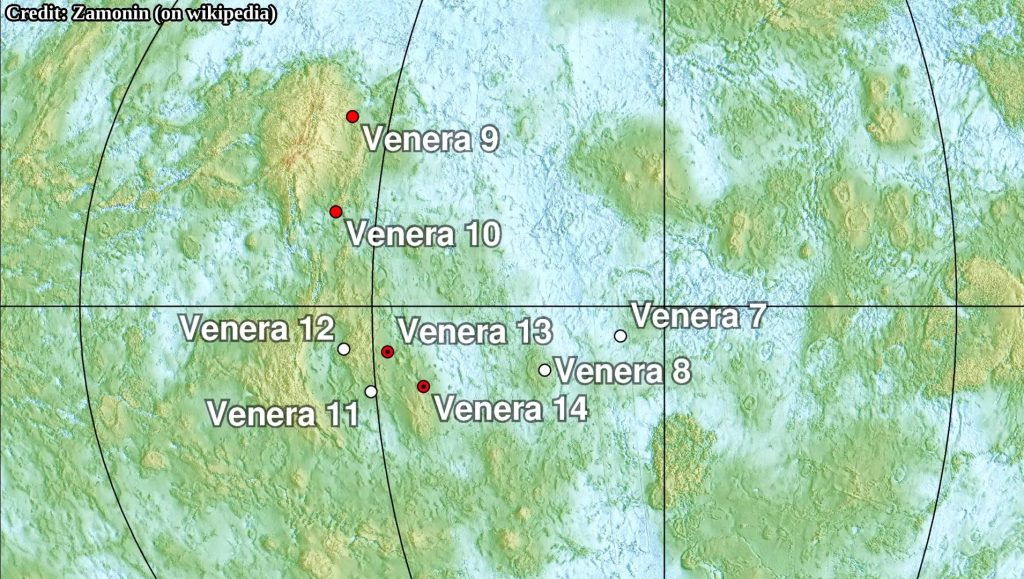
Now let’s take a look at where the Soviet Vanero landers landed. As we can see in image above, all of them are close to the equator. Of the Vanera landers that returned good images from the surface of Venus, only the Vanera 9 images are somewhat from a pseudocontinent. This pseudocontinent region called Beta is essentially a giant shield volcano, or rather two of them. Close to its center, it contains these two peaks, Ria and Thea, which are about 6 km above the mean radius.
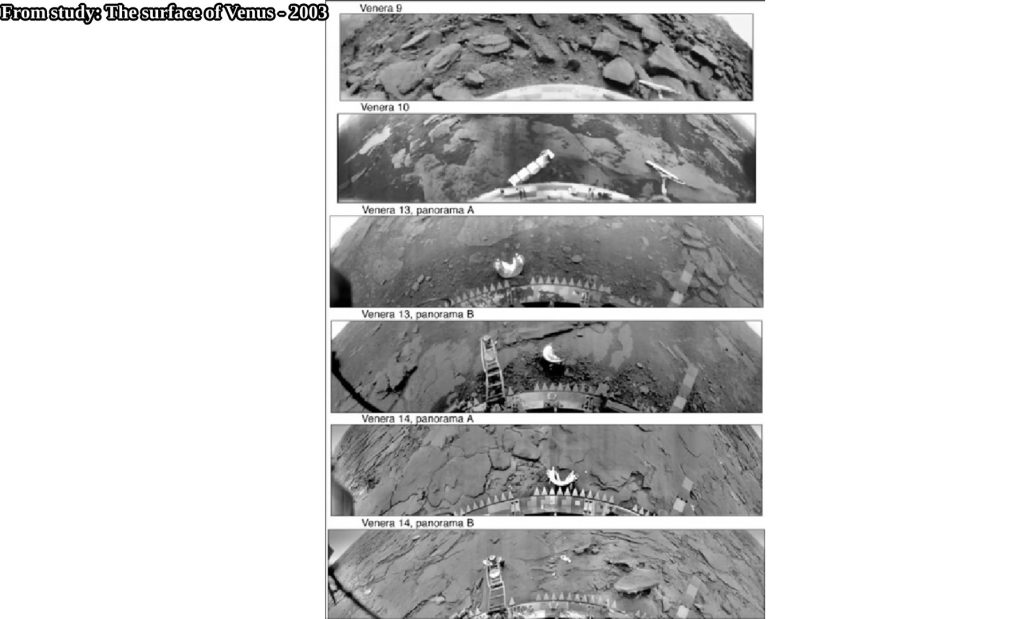
In this collection of panoramas delivered by the Vanera landers, we can see that at the location of where Vanera 9 landed, the surface is very much different compared to the surface captured at the sites of Vanera 10, 13, and 14. The Vanera 9 landing site is filled with rocks, while the rest have a flat ground that is either smooth or has a type of soil. And considering the radar images that we have of the regions that are continental and the ones that are just planes, it makes a lot of sense that at the level of the ground, these two different regions also look very differently.
The bright regions, that is tesser, which overlap a great deal with the continents, are also potentially the oldest parts of Venus’s surface. So Venus doesn’t have a surface as cratered as the one on the Moon, Mercury, and Mars. So its surface is certainly younger than theirs. Still, Venus has more craters than Earth, so its surface is older than the one on Earth. The craters on Venus are somewhat evenly spread out across the planes. And they indicate that the mean age of Venus’s surface ranges from 1 billion to 500 million years old. And most of that surface was created likely as a result of one massive global resurfacing event.
So during a period of extreme volcanic activity, apparently Venus might have periods of relative inactivity and periods of extreme levels of activity. But complex non-smooth tesseray regions are potentially much older than the planes of Venus we see today. So the continental regions could give us an insight into what Venus was like before the global resurfacing event.
Currently, there are no known plans to send a lander directly to Aphrodite or Ishtar. However, NASA has a mission called Da Vinci, which is set on sending an orbiter and an atmospheric probe to Venus. That atmospheric probe is particularly interesting. It is designed to have a very slow descent. The thick atmosphere of Venus provides a lot more air resistance than the one on Earth. So that will certainly help slow down the descent of the probe to a good extent. But on top of that, the probe will also deploy a parachute that is made out of special materials that are able to withstand Venus’s very harsh atmospheric conditions.
During the descent, it is going to analyze the composition of the atmosphere and the conditions such as pressure, wind, and temperature. And it is also going to give us the first up-close images of a tesseray region on Venus, which is a mini pseudocontinent called Alpha. It is located in the southern hemisphere and its tallest points stand some 3 to 5 km above the mean radius. Those up-close images could give us clues into the ancient environment and with that it could also give us clues into whether or not Venus had liquid water in the past on its surface.
Now, the Da Vinci atmospheric probe was not designed to be a lander. However, there is some chance that it could survive the impact, which is supposed to be at around 12 m/s. If it somehow does survive that impact, it is expected that under ideal conditions, it is going to operate for another 17 to 18 minutes. Whatever the case is, this atmospheric probe is pretty exciting.
For future missions, a lander would be even more exciting, especially if they are set to land on Aphrodite or Ishtar. Those could hold some very interesting clues about Venus’s past. However, the frequently chaotic terrain of those regions could make it extremely challenging to get a lander to safely land. And if it turns out that that is a massive problem, then just sending atmospheric probes similar to Dainci but through those regions would be a good idea.

